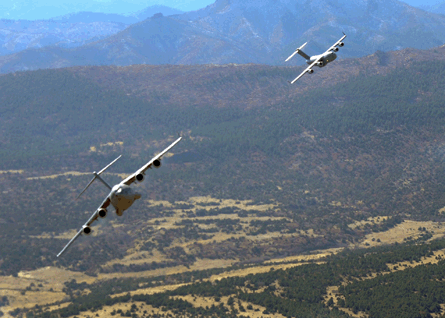Airshow routines by military forces are not flight tests. The goal is not to allow normal, operational pilots a chance to extract an aircraft's maximum performance above a large crowd. It is rather to demonstrate several of the aircraft's most important - and eye-pleasing - capabilities, allowing taxpayers a prudent, safe peek at what their money is buying.
That purpose was clearly lost on the Alaska Air National Guard's 3rd Airlift Wing.
Maj Michael Freyholtz, who was killed on 28 July along with three crew members as they practised an airshow routine, may not have been a classic "hot-dog" pilot. He was not feared as a loose cannon. Indeed, his abilities as a stick-and-rudder C-17 flier had made him the star of his unit and beyond, flying airshow displays around the world with Boeing's large airlifter.
 |
|---|
© USAF/Airman 1st Class Myles SteppAir show displays are not manoeuvres |
So confident was Freyholtz in his own abilities that he deviated from the US Air Force's prescribed routine to make a better show for the spectators. Unfortunately, his version required flying lower, slower and more aggressively than the USAF's regulated safety limits. Freyholtz knew his routine would trip the C-17's automatic stall warning system, so he briefed his crew members to ignore such alerts as inaccurate.
Freyholtz may be blamed for the crash, but the investigation report points to a failure of command leadership, and not just at the 3rd Airlift Wing. Freyholtz performed the routine that killed him on USAF bases around the world, yet no one stopped him.
Airshow displays are becoming an expensive extravagance for budget-constrained air forces globally, even without the loss aircraft and some of the world's finest pilots. In the past five years alone, the air force display teams of Argentina, Brazil, India, France, Korea, Russia, UK and the USA have suffered losses.
In many of these examples, no one truly is at fault. Sometimes, event the most well-trained pilots make mistakes and the most well-maintained aircraft break.
But the C-17 crash in Alaska belongs in a different category: avoidable and senseless. The crash report raises questions about command climate that USAF leaders believed had been answered after a 1994 B-52 crash that occurred under similar circumstances.
So far, the USAF's reaction to the fatal C-17 loss has not inspired confidence that the proper lessons will be learned. There is no evidence that anyone will be held accountable for allowing Freyholtz to fly so dangerously. That may be an even bigger tragedy.
Source: Flight International






















